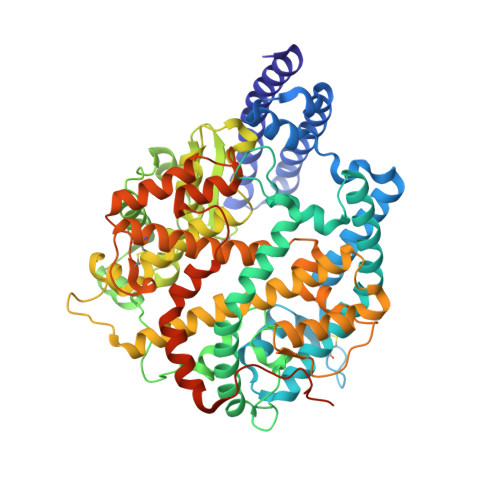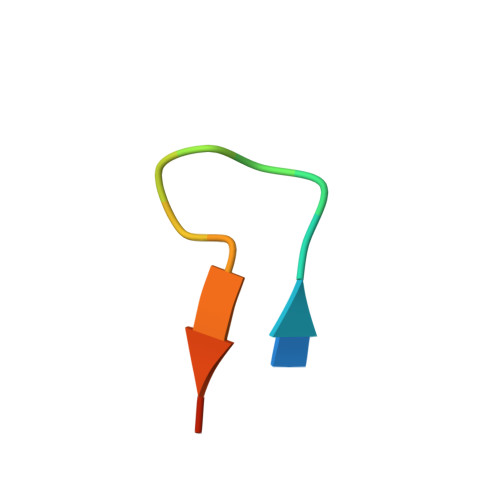Discovery of High Affinity Cyclic Peptide Ligands for Human ACE2 with SARS-CoV-2 Entry Inhibitory Activity.
Bedding, M.J., Franck, C., Johansen-Leete, J., Aggarwal, A., Maxwell, J.W.C., Patel, K., Hawkins, P.M.E., Low, J.K.K., Siddiquee, R., Sani, H.M., Ford, D.J., Turville, S., Mackay, J.P., Passioura, T., Christie, M., Payne, R.J.(2024) ACS Chem Biol 19: 141-152
- PubMed: 38085789
- DOI: https://doi.org/10.1021/acschembio.3c00568
- Primary Citation of Related Structures:
8TOQ, 8TOR, 8TOS, 8TOT, 8TOU - PubMed Abstract:
The development of effective antiviral compounds is essential for mitigating the effects of the COVID-19 pandemic. Entry of SARS-CoV-2 virions into host cells is mediated by the interaction between the viral spike (S) protein and membrane-bound angiotensin-converting enzyme 2 (ACE2) on the surface of epithelial cells. Inhibition of this viral protein-host protein interaction is an attractive avenue for the development of antiviral molecules with numerous spike-binding molecules generated to date. Herein, we describe an alternative approach to inhibit the spike-ACE2 interaction by targeting the spike-binding interface of human ACE2 via mRNA display. Two consecutive display selections were performed to direct cyclic peptide ligand binding toward the spike binding interface of ACE2. Through this process, potent cyclic peptide binders of human ACE2 (with affinities in the picomolar to nanomolar range) were identified, two of which neutralized SARS-CoV-2 entry. This work demonstrates the potential of targeting ACE2 for the generation of anti-SARS-CoV-2 therapeutics as well as broad spectrum antivirals for the treatment of SARS-like betacoronavirus infection.
Organizational Affiliation:
School of Chemistry, The University of Sydney, Sydney, New South Wales 2006, Australia.


















